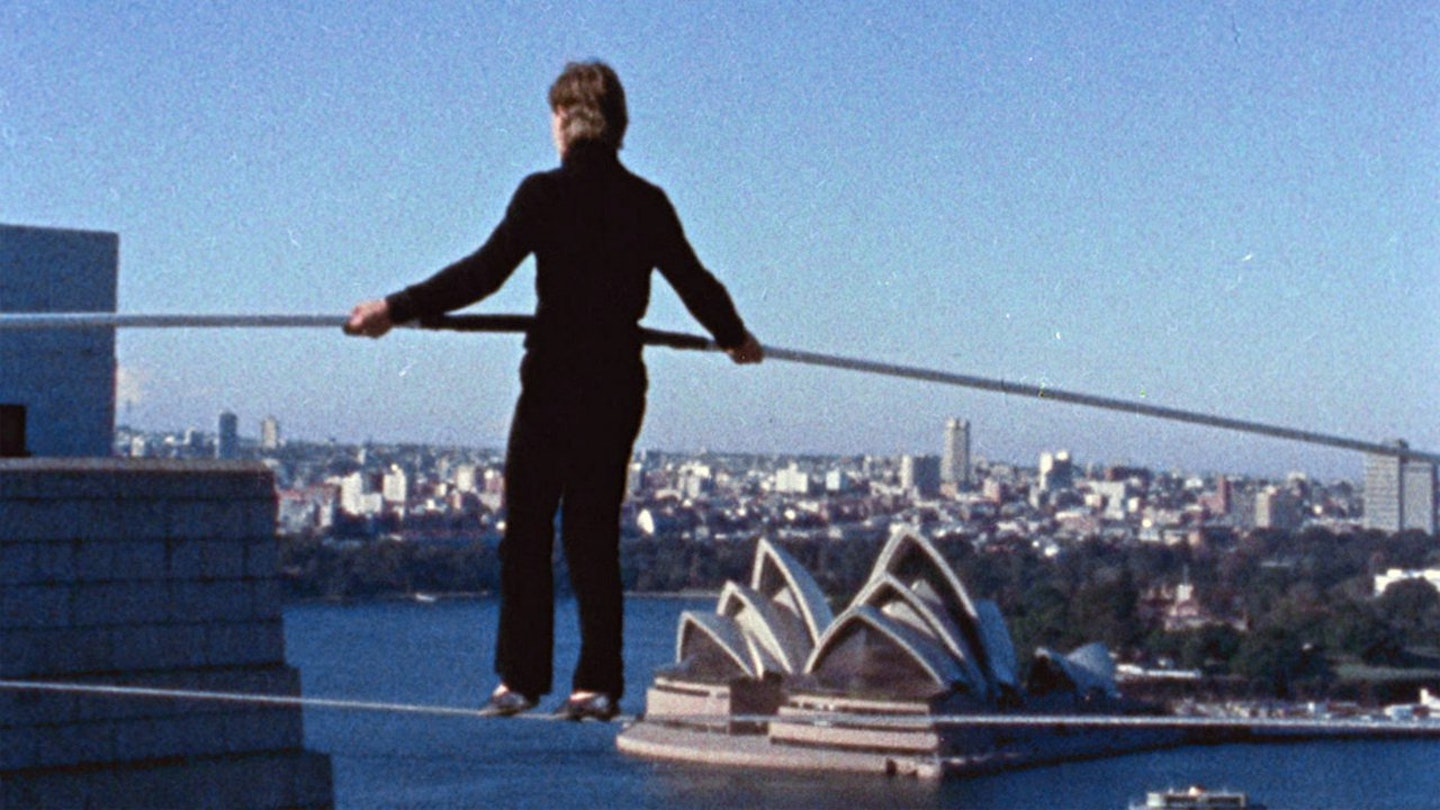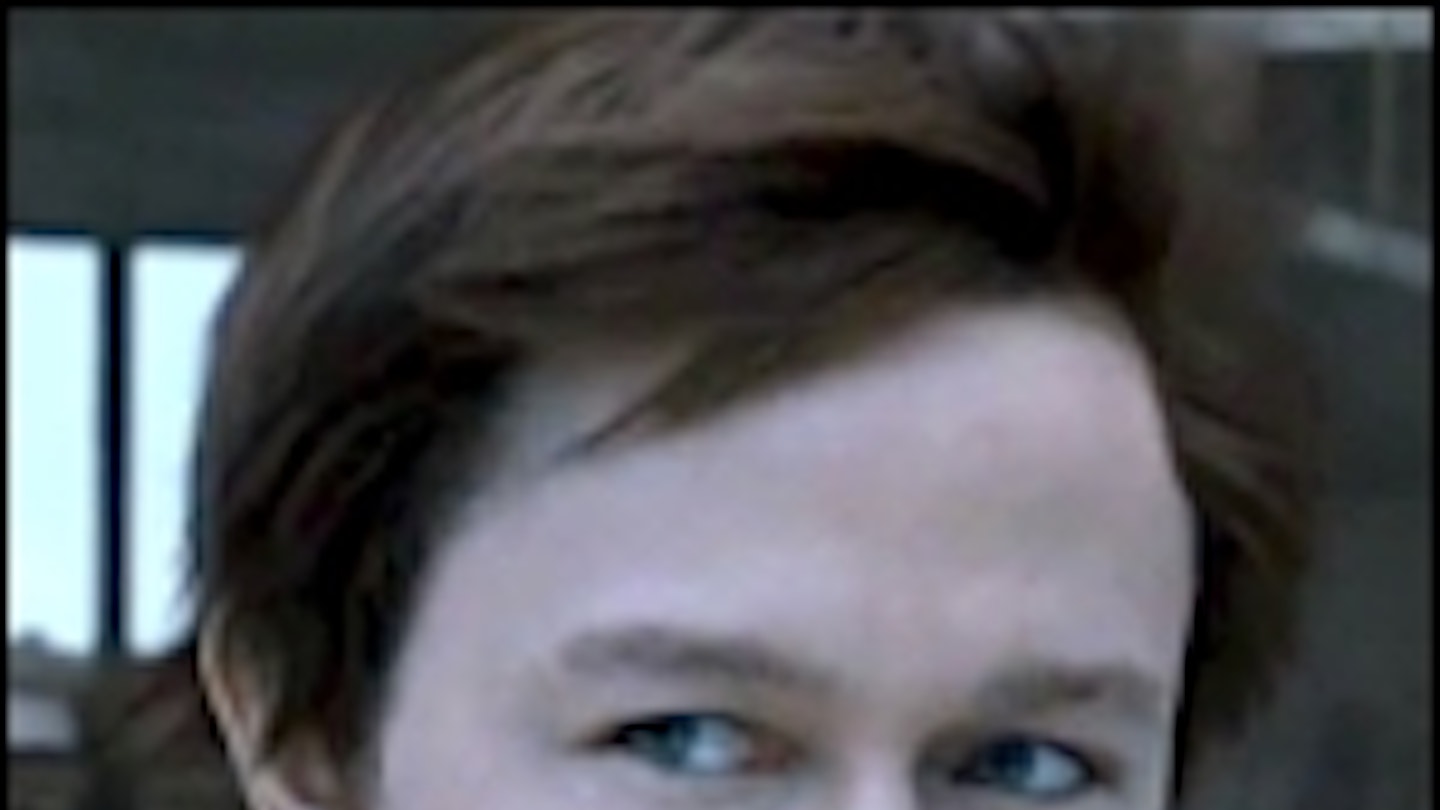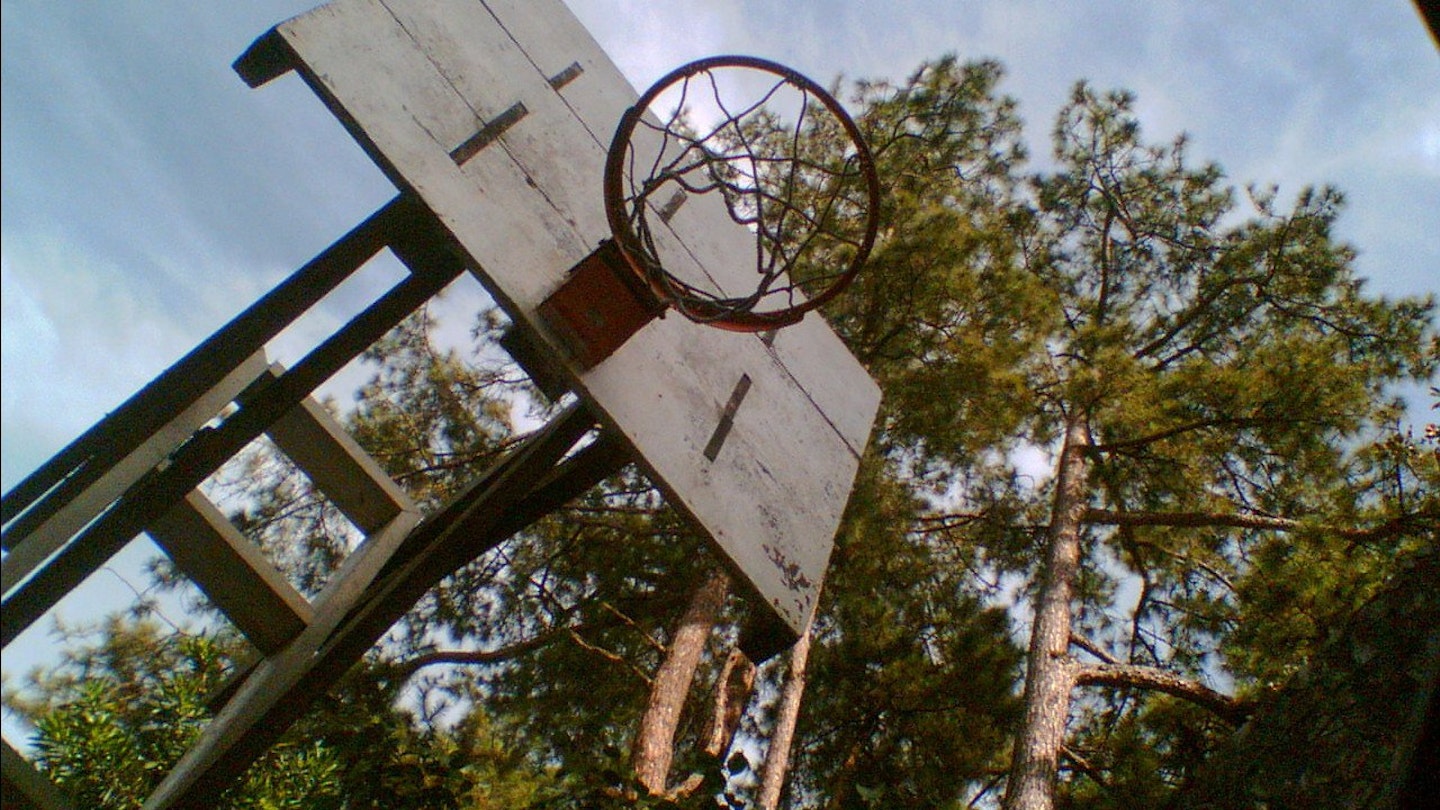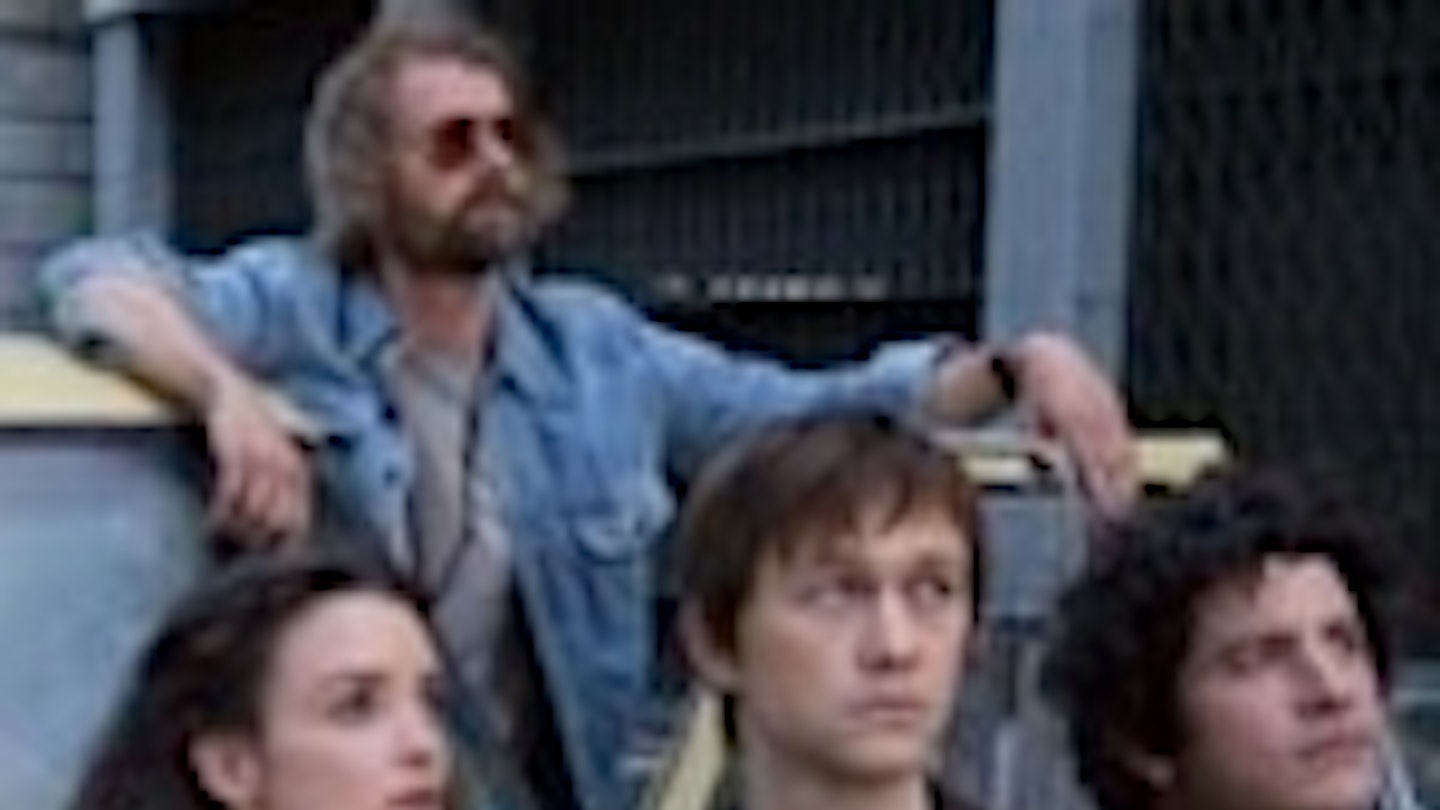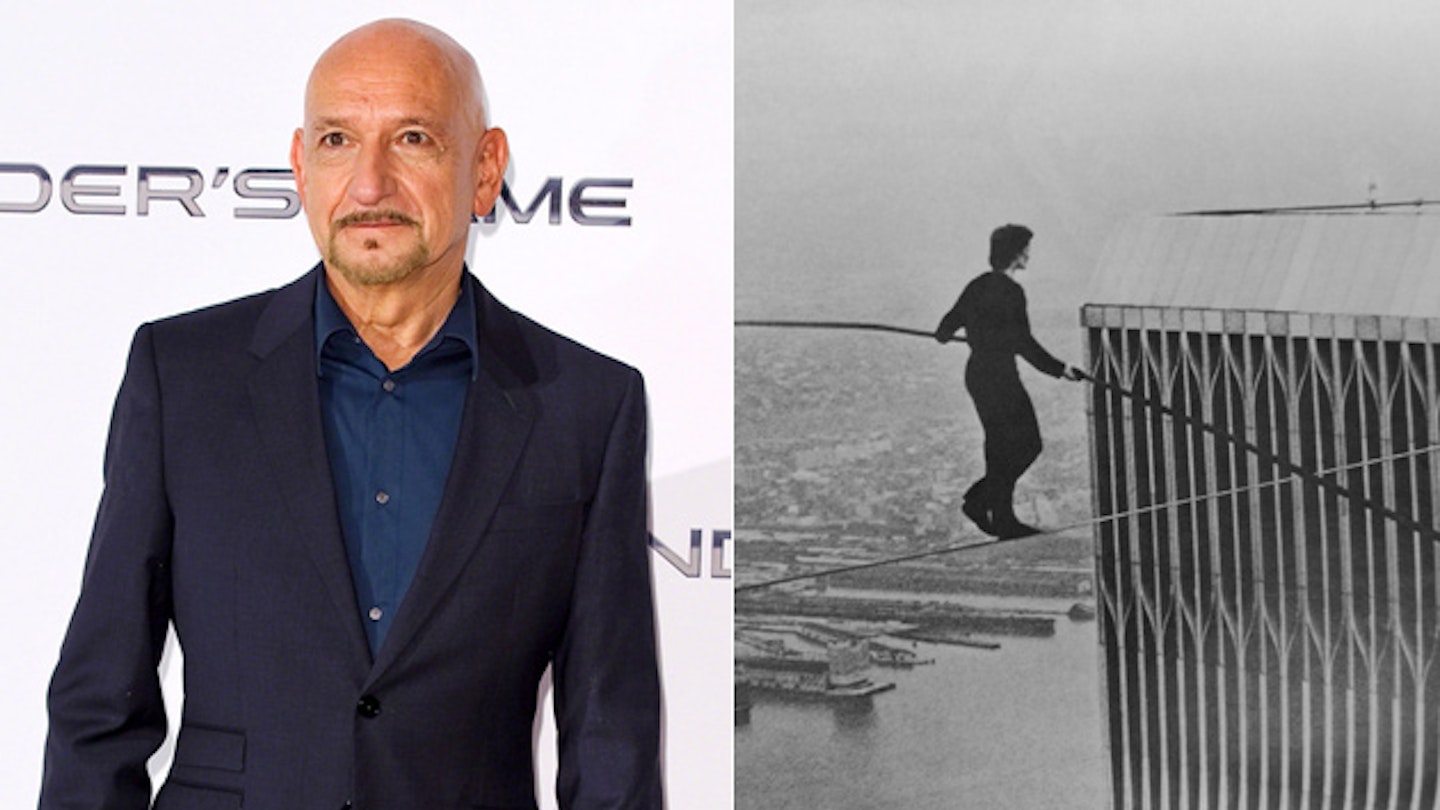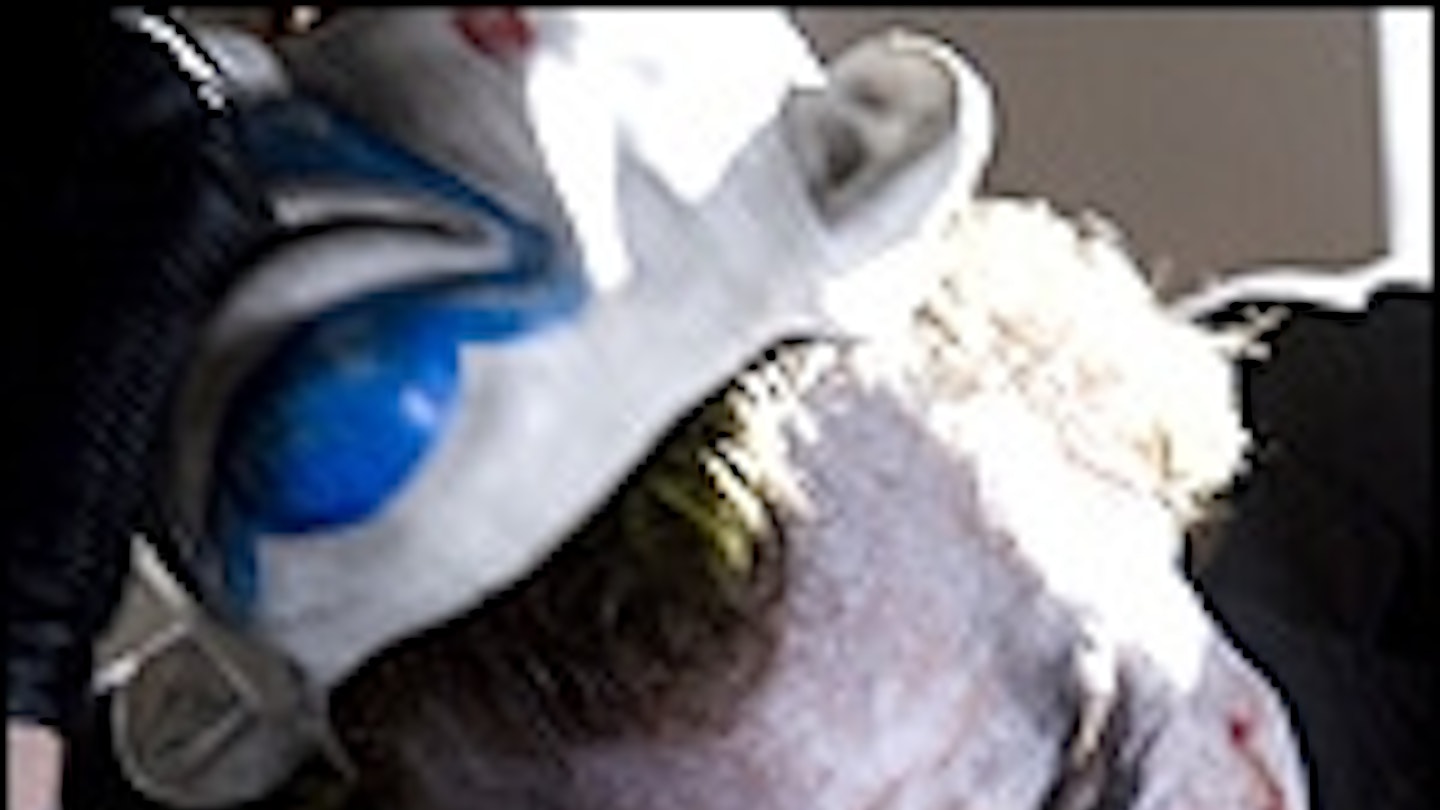As a child, Petit saw in the pages of a French newspaper a plan showing two huge skyscrapers, the World Trade Center, which were to be constructed in New York City. Without pause or thought, he drew a line between the Twin Towers and, at that moment, sketched out his own future. The boy knew that he would become a high-wire walker, a modern-day Charles Blondin, and that he would traverse the void between these soaring edifices. It was an improbable dream but, courtesy of Petit’s astonishing zeal, one that would become a reality.
In recounting the story, British director James Marsh blends interviews, archive footage and re-enactment, the latter focussed on the team’s bid to penetrate WTC security and hoist the high wires. This part of the venture, in contrast to the wire-walk itself, was to be a covert operation and it took them months of planning to get the cables in place. Marsh occasions several scenes that add a dash of humour to what is, at times, a solemn undertaking - Petit and his cronies were on a serious mission so their voyage is a little light on laughs.
It is not light on emotion, however, and anxiety is perhaps the most prevalent of all - those with no head for heights will bury said head in their hands when the walker steps out on his slender cable.
At the time, Petit’s walk captivated the city and catapulted him to renown. Such is his legacy, The New Yorker published a commemorative 9/11 cover featuring his likeness, walking across an empty cover, the buildings he had once conquered now haunting in their absence. Whatever people make of the man - the interviews reveal Petit’s grand self-confidence - it’s hard not to succumb to his enthusiasm, courage and unremitting dedication to what he argues is a true artform. After watching the film, audiences might well agree with him.
